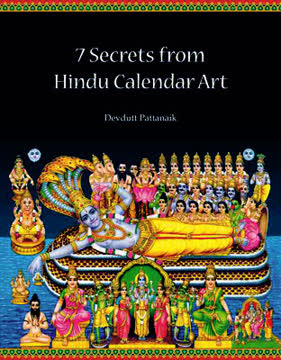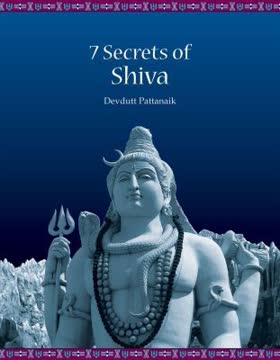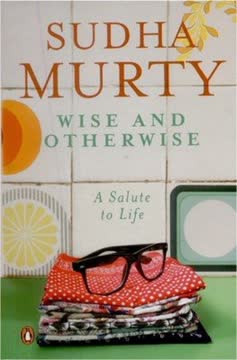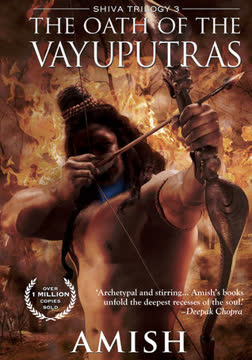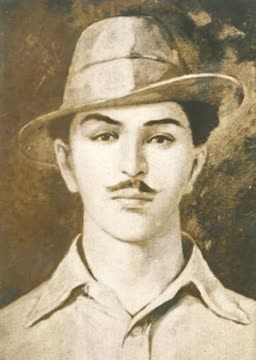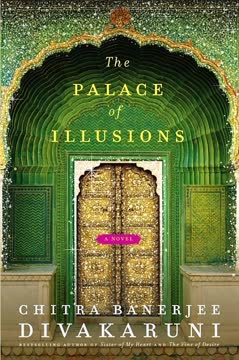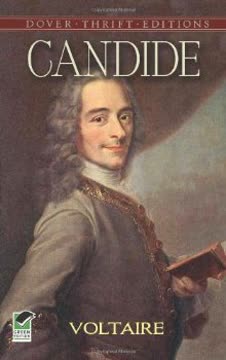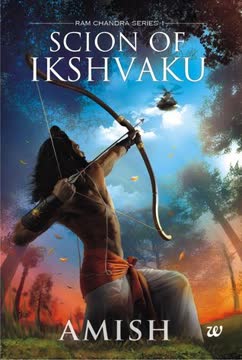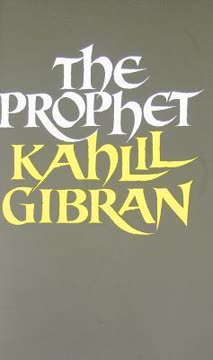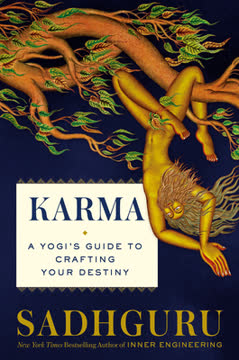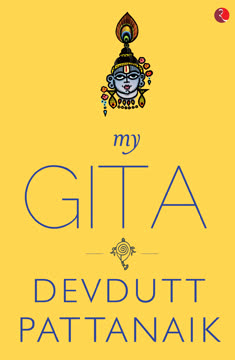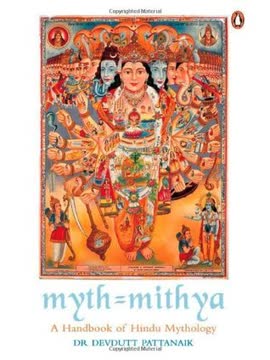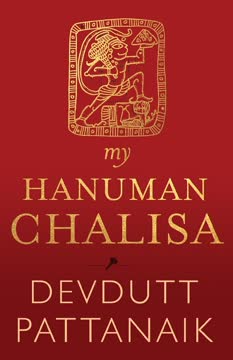Key Takeaways
1. Hindu Mythology: A Diverse Pantheon Reflecting Life's Complexities
Different people see God differently
A multifaceted divine. Hindu mythology presents a rich tapestry of divine beings, each representing different aspects of existence. This diversity allows for multiple interpretations and personal connections to the divine, reflecting the complexity of human experience and thought.
Symbolism in imagery. Hindu calendar art and temple iconography use intricate symbolism to convey philosophical and spiritual concepts. For example:
- The elephant-headed Ganesha represents the removal of obstacles
- The multi-armed forms of deities symbolize their various powers and attributes
- The divine couples (Shiva-Parvati, Vishnu-Lakshmi) represent the union of spiritual and material realms
Local and universal forms. Hindu deities often have both localized forms (like village goddesses) and universal manifestations (like the Trimurti of Brahma, Vishnu, and Shiva). This allows for a connection between local traditions and broader Hindu philosophy.
2. The Dual Nature of Divinity: God and Goddess, Spirit and Matter
Within infinite myths lies the Eternal Truth
Complementary opposites. Hindu philosophy often presents divinity as a union of complementary forces:
- Male and female
- Spirit (Purusha) and matter (Prakriti)
- Consciousness and energy
Ardhanari: divine androgyny. The concept of Ardhanari (half-male, half-female form of Shiva) symbolizes the inseparable nature of these dualities. It represents the idea that both masculine and feminine principles are essential aspects of the divine and of reality itself.
Practical implications. This dual nature of divinity encourages a holistic worldview, recognizing the importance of both spiritual pursuits and engagement with the material world. It suggests that true wisdom comes from balancing and integrating these seemingly opposite aspects of existence.
3. Vishnu: The Preserver and Upholder of Dharma
Detached engagement brings order
Cosmic maintainer. Vishnu represents the preserving force in the universe, ensuring cosmic balance and the continuation of life. His role is to uphold dharma (righteous living and cosmic order) through various means.
Avatars and adaptation. Vishnu's ten major avatars (incarnations) demonstrate his adaptability to changing circumstances:
- Matsya (fish): Saving wisdom from cosmic dissolution
- Kurma (tortoise): Supporting the churning of the cosmic ocean
- Varaha (boar): Rescuing the earth from cosmic waters
- Narasimha (man-lion): Defeating tyranny through unexpected means
- Vamana (dwarf): Humbling the proud and restoring cosmic balance
- Parashurama: Checking the abuse of power
- Rama: Exemplifying ideal kingship and ethical conduct
- Krishna: Teaching divine love and duty
- Buddha: Emphasizing compassion and the middle path
- Kalki: Future avatar to reset the cosmic cycle
Engaged detachment. Vishnu's philosophy encourages active participation in the world while maintaining inner detachment, as exemplified in Krishna's teachings in the Bhagavad Gita.
4. Shiva: The Destroyer and Embodiment of Spiritual Detachment
Withdrawal leads to destruction
Beyond conventional destruction. Shiva's role as the "destroyer" is often misunderstood. His destruction is of:
- Desire (Kama)
- Death and rebirth cycle (Yama)
- The three worlds of experience (Tripura)
Ascetic ideal. Shiva represents the ultimate ascetic, demonstrating:
- Detachment from worldly concerns
- Mastery over sensory experiences
- Transcendence of conventional social norms
Yogic symbolism. Shiva's iconography is rich with yogic symbolism:
- The third eye: spiritual insight and the destruction of ignorance
- Matted locks: rejection of social conventions
- Crescent moon: mastery over the mind
- Snake around the neck: control over fear and desire
Tension with engagement. The mythology often shows a tension between Shiva's ascetic nature and the need for worldly engagement, as seen in his marriage to Parvati and his role as a householder.
5. The Goddess: Manifesting as Power, Knowledge, and Wealth
Desire and destiny create life
Tripartite manifestation. The divine feminine in Hinduism often appears in three primary forms:
- Durga/Kali: Power and protection
- Saraswati: Knowledge and arts
- Lakshmi: Wealth and prosperity
Nature and culture. The Goddess represents both the raw power of nature and the nurturing aspects of culture. This duality is seen in:
- Village goddesses protecting and providing for communities
- Universal forms like Shakti embodying cosmic energy
Empowerment and surrender. Goddess worship in Hinduism involves both:
- Seeking empowerment through connection with divine feminine energy
- Surrendering to the cosmic forces beyond human control
Transformation. Many goddess myths involve transformation, such as:
- Parvati's penance to win Shiva's attention
- Durga's creation to defeat demons the male gods couldn't overcome
6. Avatars: Divine Incarnations Adapting to Changing Times
God is stillness within, Goddess is movement around
Purpose of avatars. Divine incarnations serve multiple purposes:
- Restoring dharma in times of cosmic imbalance
- Providing accessible forms of divinity for devotees
- Demonstrating ideal conduct for different eras
Evolution of avatars. The sequence of Vishnu's avatars shows an evolution:
- From animal and hybrid forms to human incarnations
- From addressing cosmic threats to dealing with social and ethical challenges
Rama and Krishna. Two of the most popular avatars represent different approaches:
- Rama: The ideal king, upholding societal norms and duties
- Krishna: The divine lover and teacher, often transcending conventional morality
Bhakti movement. Avatar worship significantly contributed to the bhakti (devotional) movement in Hinduism, emphasizing personal relationship with the divine.
7. Brahma: The Forgotten Creator and Symbol of Human Attachment
Human life is an opportunity
Neglected creator. Despite being part of the Hindu trinity, Brahma is rarely worshipped. This neglect stems from mythological reasons:
- His infatuation with his own creation (Shatarupa)
- Forgetting the purpose of creation (self-realization)
Symbolic interpretation. Brahma's story can be seen as an allegory for:
- The human tendency to become attached to the material world
- The forgetfulness of our true spiritual nature
- The cyclical nature of creation and dissolution
Self-reflection. The myth of Brahma encourages introspection:
- Are we, like Brahma, chasing after our own creations?
- Have we forgotten the purpose of our existence?
8. The Cyclical Nature of Existence in Hindu Thought
What dies is always reborn
Cosmic cycles. Hindu cosmology posits vast cycles of creation and dissolution:
- Days and nights of Brahma (each lasting billions of years)
- Yugas (world ages) with varying levels of dharma
Individual cycles. The concept of reincarnation reflects this cyclical thinking on an individual level:
- Souls journey through multiple lifetimes
- Karma determines the circumstances of rebirth
Implications for life. This cyclical worldview impacts Hindu attitudes:
- Less emphasis on a single, final judgment
- Greater focus on gradual spiritual evolution over many lifetimes
- Acceptance of change as a fundamental aspect of reality
9. Dharma: The Cosmic Order and Ethical Framework
Detached engagement brings order
Multifaceted concept. Dharma encompasses:
- Cosmic order and natural law
- Individual duty and ethical conduct
- Social norms and responsibilities
Situational ethics. Hindu epics like the Mahabharata explore the complexities of dharma:
- Sometimes conflicting duties (e.g., familial vs. societal obligations)
- The need for wisdom in interpreting and applying dharmic principles
Vishnu's role. As the preserver, Vishnu is closely associated with upholding dharma:
- His avatars often appear to restore dharmic balance
- The Bhagavad Gita (spoken by Krishna) is a key text on dharmic action
Personal and universal. Dharma operates on both individual and cosmic levels:
- Svadharma: One's personal duty based on nature and circumstances
- Sanatana Dharma: The eternal, universal order
10. The Interplay of Desire and Destiny in Hindu Philosophy
Desire and destiny create life
Creative tension. Hindu thought recognizes the dynamic between:
- Kama (desire, love): The driving force of creation and action
- Karma (action and its consequences): Shaping individual and collective destiny
Balance and transcendence. The goal is often to:
- Cultivate positive desires aligned with dharma
- Gradually transcend selfish desires through spiritual practice
Divine play. The concept of lila (divine play) suggests that:
- The entire cosmos is a result of divine desire and creativity
- Human life is an opportunity to participate in and eventually realize this playful nature of existence
Practical wisdom. Hindu myths and philosophy offer guidance on:
- Recognizing the power of desire in shaping our lives
- Understanding how our actions create future circumstances
- Developing discernment to navigate the complex interplay of personal will and cosmic forces
Last updated:
FAQ
What is "7 Secrets From Hindu Calendar Art" by Devdutt Pattanaik about?
- Exploring Hindu Iconography: The book decodes the symbolism and stories behind popular images found in Hindu calendar art, which are widely seen in Indian homes and temples.
- Understanding Hindu Worldview: It introduces readers to the unique Hindu perspective on divinity, mythology, and the relationship between the material and spiritual worlds.
- Cultural and Philosophical Insights: The book uses art as a lens to explain complex philosophical concepts, such as the cyclical nature of life, the interplay of desire and destiny, and the balance between stillness and movement.
- Accessible Mythology: Devdutt Pattanaik presents these ideas in a way that is accessible to both insiders and outsiders to Hindu culture, emphasizing empathy and curiosity over judgment.
Why should I read "7 Secrets From Hindu Calendar Art" by Devdutt Pattanaik?
- Demystifies Hindu Art: The book helps readers understand the deeper meanings behind familiar but often misunderstood images in Hindu culture.
- Bridges Tradition and Modernity: It connects ancient myths and symbols to contemporary life, making them relevant for modern readers.
- Encourages Cultural Empathy: By explaining the subjective truths of Hinduism, it fosters greater tolerance and appreciation for different worldviews.
- Engaging Storytelling: Pattanaik uses stories, analogies, and visual analysis to make complex ideas engaging and memorable.
What are the key takeaways from "7 Secrets From Hindu Calendar Art" by Devdutt Pattanaik?
- Subjective Truths: Hindu mythology is based on subjective truths, and different people see God and the world differently.
- Symbolism in Art: Every image, from Ganesha to Kali, is a container of ideas, not just fantasy or decoration.
- Cyclical Worldview: The Hindu perspective sees life, death, and rebirth as cyclical, not linear, with no absolute beginnings or endings.
- Balance of Opposites: The interplay between God (stillness, spirit) and Goddess (movement, matter) is central to understanding Hindu thought.
- Role of Desire and Destiny: Human life is shaped by the tension between desire (Kama) and destiny (Yama), and the purpose is self-realization.
How does Devdutt Pattanaik approach the analysis of Hindu calendar art in "7 Secrets From Hindu Calendar Art"?
- Visual Vocabulary: He treats the images as a unique visual language created by generations of artists and artisans.
- Symbolic Interpretation: Rather than focusing on aesthetics, he decodes the symbols, stories, and rituals embedded in the art.
- Cultural Context: Pattanaik situates each image within its historical, regional, and social context, showing how local deities connect to pan-Hindu ideas.
- Multiple Perspectives: He acknowledges that his explanations are just one of many possible interpretations, reflecting the pluralism of Hinduism.
What is the significance of Ganesha’s story in "7 Secrets From Hindu Calendar Art"?
- Subjectivity of Truth: The story of Ganesha and Kartikeya’s race illustrates the difference between the objective world and one’s subjective world.
- Diversity of Divinity: Ganesha’s form (elephant head, potbelly, rat companion) shows the Hindu comfort with multiple, even fantastical, representations of the divine.
- Symbolic Meanings: Ganesha embodies power, prosperity, and the removal of obstacles, with each aspect of his iconography carrying deeper meaning.
- Cultural Relevance: The story encourages empathy and understanding of different worldviews, a recurring theme in the book.
How does "7 Secrets From Hindu Calendar Art" explain the Hindu concept of God and Goddess?
- Not Singular or Gendered: God is not a singular, masculine entity; there are gods, goddesses, Gods, and Goddesses, each representing different aspects of the divine.
- Form and Formlessness: Divinity is ultimately formless, but humans use forms (male, female, animal, plant) to comprehend it.
- Balance of Opposites: The male form often represents the spiritual, still, unchanging reality, while the female form represents the material, dynamic, changing reality.
- Interdependence: God and Goddess are incomplete without each other, symbolizing the need for both spirit and matter in the universe.
What is the role of myth and mythology according to "7 Secrets From Hindu Calendar Art"?
- Myth as Subjective Truth: Myths are ideas churned in one’s subjective world, not universal or scientific truths.
- Mythology as Communication: Mythology consists of stories, symbols, and rituals that communicate these subjective truths to believers.
- Cultural Identity: Myths shape beliefs and behaviors, influencing how communities see themselves and others.
- Tolerance and Pluralism: Recognizing the mythic basis of beliefs can foster greater tolerance and accommodation among different cultures.
How does "7 Secrets From Hindu Calendar Art" interpret the cyclical nature of life and rebirth in Hinduism?
- No Final End: Life, death, and rebirth are seen as cyclical processes, with no absolute beginning or end.
- Role of Narayan/Vishnu: The sleeping and awakening of Narayan symbolize the dissolution and creation of the world in endless cycles.
- Soul and Matter: The soul is permanent and indestructible, while matter is ever-changing, giving the illusion of birth and death.
- Contrast with Other Cultures: This cyclical worldview contrasts with the linear perspectives of Greek, Christian, and Islamic traditions.
What is the secret of Ardhanari (the half-woman god) in "7 Secrets From Hindu Calendar Art"?
- Union of Opposites: Ardhanari represents the union of the unchanging spiritual reality (male) and the changing material reality (female).
- Symbolic, Not Literal: The image is not about gender ambiguity but about the balance between stillness and movement, spirit and matter.
- Cultural Misinterpretations: While the form is inclusive, society often misreads it, focusing on representation rather than the underlying idea.
- Path to Realization: The image teaches that only through material reality (Goddess) can one realize spiritual reality (God).
How does "7 Secrets From Hindu Calendar Art" explain the transformation of Shiva from hermit to householder?
- Destruction by Withdrawal: Shiva destroys by withdrawing from the world, shutting his eyes, and refusing to engage with material reality.
- Role of the Goddess: The Goddess (Kali, Parvati) forces Shiva to open his eyes and participate in the world, leading to creation and engagement.
- Marriage as Metaphor: Shiva’s marriage to Parvati symbolizes the union of spirit and matter, and his transformation into Shankara, the benevolent householder.
- Balance of Detachment and Engagement: The stories illustrate the tension and eventual balance between ascetic withdrawal and worldly involvement.
What is the significance of desire and destiny in "7 Secrets From Hindu Calendar Art"?
- Desire as Creative Force: Desire (Kama) is seen as the force that brings the world into existence and drives human action.
- Destiny as Limitation: Destiny (Yama) represents the constraints of fate, karma, and the inevitability of death and rebirth.
- Goddess as Mediator: The Goddess embodies both the fulfillment of desire and the enforcement of destiny, nurturing and protecting but also demanding respect and balance.
- Transformation and Liberation: The interplay of desire and destiny is necessary for growth, transformation, and ultimately, self-realization.
What are the best quotes from "7 Secrets From Hindu Calendar Art" by Devdutt Pattanaik and what do they mean?
- "Within infinite myths lies the Eternal Truth. Who sees it all? Varuna has but a thousand eyes, Indra, a hundred, and I, only two."
- This quote highlights the limitations of human perception and the multiplicity of truths in Hindu thought.
- "Myth is an idea churned in my world; mythology is the set of stories, symbols and rituals that communicate a myth."
- It distinguishes between personal belief (myth) and the cultural expressions that communicate it (mythology).
- "God is stillness within, Goddess is movement around."
- This encapsulates the core Hindu idea of the balance between the unchanging soul and the ever-changing world.
- "The world is objective; my world is subjective. The world is rational and scientific; my world is intuitive and emotional."
- It emphasizes the importance of subjective experience in shaping beliefs and behaviors.
- "If a monkey can become God, so can man. Thus, there is still hope for Brahma, the unworshipped God."
- This quote uses the story of Hanuman to inspire self-realization and the potential for divinity within every human.
Review Summary
7 Secrets from Hindu Calendar Art receives mixed reviews, with an average rating of 3.71/5. Many readers praise Pattanaik's insightful decoding of Hindu mythology through calendar art, finding it enlightening and thought-provoking. They appreciate the author's ability to explain complex concepts in simple terms and reveal hidden meanings in familiar images. Some criticize the book for being repetitive or lacking depth. A few readers note that the black-and-white illustrations are a drawback, as color would have enhanced the visual experience.
The 7 Secrets Series
Similar Books
Download PDF
Download EPUB
.epub digital book format is ideal for reading ebooks on phones, tablets, and e-readers.
